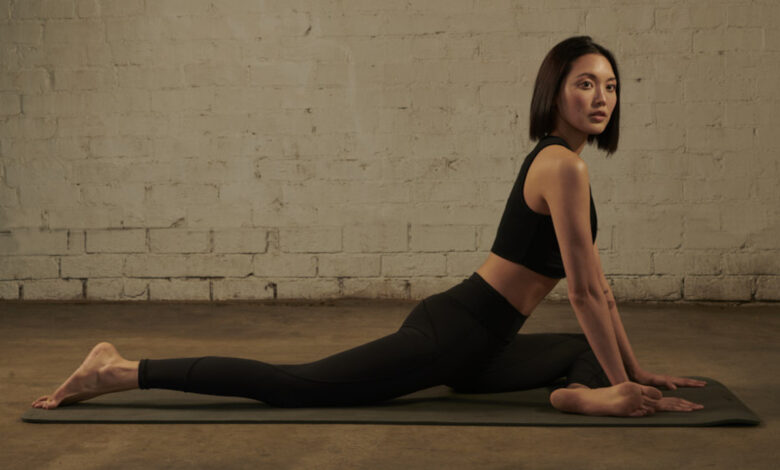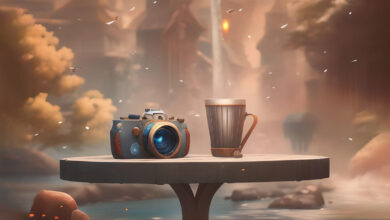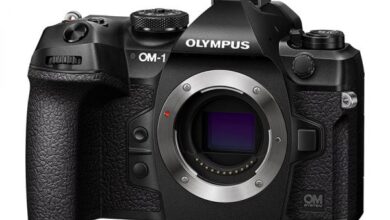Has Social Media Been a Positive or Negative for the World of Photography?

In today’s article, I’d like to pose a fundamental question. Has the growth of social media been a net positive or negative for the world of photography?
Let’s start today’s discussion with a few basic agreements. Social media is here to stay, so wishing away its existence or trying to wait for it to go away is a waste of time. I spent years hoping reality TV would be a flash in the pan. Decades later, you see how far that’s gotten me. So, even though I have mixed feelings about social media, I have fully accepted that it is as much a fact of life going forward as public utilities or the seventh inning stretch.
Also, while much of this essay will concern social media’s effect on one’s ability to make a living through photography, it also must be accepted that to ignore social media altogether is simply not an option for working professionals these days. How exactly you use social media is variable. But, as bad as I might want to, I can’t simply bury my head in the sand and stay off of every platform. So regardless of the answer to the question posed above, we will be on social media for some time to come.
As I’m writing this intro, I am reminded of the words once spoken by a motivational speaker I was listening to. He implored the audience to stop thinking of life as something that happens “to” you and start thinking of life as something that happens “for” you. This small shift in philosophy won’t change the tactile facts of a given situation. But, if one is to look at life as something that is happening on their own behalf, it allows us to envision the rapidly changing events of the world around us to all be working in our favor. At that point, it’s simply a matter of being able to learn to ride the waves rather than fighting against them.
I’m reminded of that quote because riding those waves is something we’ve all had to contend with. This is true if you are a professional photographer or someone with little interests in the arts at all. The playing field is constantly adjusting its boundaries. The trick is trying to continue to find the endzone.
So let’s have a look at the question above. Like most things in life, there is no real clear-cut answer. But it would behoove us to have a look at some of the ways in which social media has changed the photography world for good and for ill.

More Ways to Get Our Work Seen
I remember years ago I was doing a test shoot with a friend of mine. She was one of those models who had long since graduated from the role of hired employee and risen into the realm of muse. Every single time I got to shoot her, my creativity just exploded. At that particular point in my photographic journey, I was on a low note. Business was slow. Wasn’t sure what I wanted to do creatively. I was floundering a bit. I tend to try to shoot my way out of the doldrums, so I set up a test shoot with her for no other reason than to be creative. She had semi-retired from modeling after more than a few bad experiences with male photographers and overly aggressive male fans. But she and I had become more than just colleagues, so she was willing to come out and play.
We went about our shoot and got some solid results. Not my best work, but during a time of fallow inspiration, I was just happy to finally have something to post on my Instagram feed. But after I began posting the images the following week, I got a call from my friend requesting that I stop showing the work. She didn’t necessarily have a problem with the images. But, apparently, unbeknownst to me, she was going through some things in her own life and was having serious second thoughts about having any photographs of her at all in the public domain. This caught me off guard, and I’d like to say I handled it better than I did, but after a series of difficult conversations, I ultimately agreed to take down what I had posted.
Clearly, she was going through something. And, as I really did care for her as a person, I felt that burying the photoshoot was the right thing to do. But I will also admit that doing so was extremely painful for me to do. More painful than is logically expected. It’s not like these were the greatest shots I ever took. They never made it anywhere near my portfolio and you won’t find them online anywhere today. So, it’s not like it was a huge creative loss.
I investigated my own reaction to the situation, and what I learned was how important it was to me to have the art I create seen by the world. I’m someone who expresses myself through my art. I live through my art. My art is my voice. Sure, I make art for the sake of art (and to make a living). But it is also important to me personally that the art be shared. Otherwise, it feels like a genie trapped in a bottle. So much magic to offer but forced into the exile of anonymity.
Social media has provided a platform for millions of artists around the world to have their voices heard. It might not be the same as having an exhibition at a famous museum. But social media is a place where everyone gets to release their art into the world without limitation. And, for some, that release is as important as the art itself.

Harder to Get Your Work Seen
Wait, what? How can social media make it both simultaneously easier and harder to get one’s work seen? We’ve just spent several paragraphs discussing how great it is to be able to get your work out to the world without barriers.
Well, the thing about everyone being able to post everything all the time is that everyone is able to post everything all the time. Even in the days when gatekeepers dictated only a handful of artists would receive any level of publicity at a given moment, it was near impossible to really break out amongst a sea of competition. We now live in a world with far fewer gatekeepers, but instead of competing with a handful of other artists to make our names, we are now competing with literally millions of other artists every second of every day.
Each day, 95 million photos and videos are shared on Instagram. Let me say that again. 95 million photos and videos are posted to Instagram every single day. And that’s just one platform. How on earth do you expect to make a dent in people’s memory when each of us is literally deluged with photos 24 hours a day? You can create the greatest photograph ever shot, but the odds of it staking any real place in society’s collective memory is extremely low. That photograph is competing against 95 million other posts that day. Then another 95 the day after that. Then again the day after that.
The gatekeeper system did prevent many deserving voices from gaining prominence in the art world. But the social media content system might be even more harmful, as it can bury even the best art through sheer numerical disadvantage.
I’ve spoken about it before, but Flickr was key to my early photography career. The photo-sharing platform was where I went when I was just learning photography. And the community and audience I found there was key to my early growth.
I’d create work and get feedback. My friends who were on the platform would share work that would then inspire me to try different things. Having a set outlet for your creative productivity can provide a certain amount of motivation to keep creating. But, of course, there’s a flip side.

I once heard a quote. I think it was by Beethoven, but I could be entirely wrong about that. The essential logic was that every artist only has a certain amount of truly great work in them. In other words, we can all reach greatness, but to expect to do it every day for the rest of time is simply not going to happen. Instead, an artist should focus on creating a smaller amount of great work rather than just more work for the sake of work.
Social media algorithms reward people who post frequently. Their business model is to keep viewers on their platforms. In order to do that, they need content. They don’t care if it’s good or not. They just need a lot of it so people constantly have something new to look at.
Because social media follower count has somehow become equated with actual value in our current society, photographers ultimately feel the pressure to play to the social media algorithms. They post image after image because they are told that to post regularly is a necessary part of business. But, going back to our Beethoven example, it is simply not possible to post “great” work multiple times a day, every day, without greatly diminishing the quality of the entire body of work. Sure, you’ll have some great ones in there. But, if your goal is to cultivate a body of work that shows you in the best light, then feeling forced to post mediocre work just to meet the “consistency” requirement is actually working against your larger goal.
Sometimes less truly is more. Art almost always falls into that category. And the content needs of social media run opposite to the concept of careful curation.

Art Has Become Content
I hate the word “content.” More and more each day. When I set off to create a career as an artist, it was to create memorable imagery that would stay with the viewer. It could be a film that people are still talking about 30 years from now. A photograph people would want to hang on their wall to look at every day. A commercial that defined a client’s brand identity for viewers everywhere. I may not always reach such lofty goals. In fact, we rarely do. But what I absolutely did not get into this line of work for was to create meaningless content meant to be scrolled past at a million miles a minute and instantly forgotten on social media.
Again, as stated at the top of this article, I get it. The world is different now than when I started. It has moved on and we have to move on with it. Being able to adjust to the current market is as important an attribute as establishing oneself in the first place. But at no point will I ever consider the art I create to be “content.”
Content is a commodity. It’s a run-of-the-mill necessity that’s main value is that it does a necessary job and costs the least amount to the consumer as possible. It’s not special. You buy it because you have to have it. Toothpaste, toilet paper, soap. You need these things to survive. But the market value is low because there are a million and one other vendors selling exactly the same thing with minimal differentiation between their product and yours. At that point, the consumer simply is trying to acquire the needed commodity for as little money as humanly possible. So, for the producer, the game becomes “how can I produce the most of this commodity at the lowest costs so that I can make a lot of it to sell in bulk?” Because consumers aren’t willing to pay more for a product with very little unique value, the producer has to sell a lot of the product to make up for the low price of each individual commodity.
Conversely, if you are marketing a more unique product, something that is produced in far more limited quantities but is a higher quality, then you are able to charge more for your product than those selling simple commodities. You can take the time to make each product unique, highly crafted, and detailed. Think, for example, of a luxury car built entirely by hand. You are not just selling something that people will buy because they have to, like a pair of socks. You are creating an entire experience that is something that no other vendor will be able to replicate.
That’s what art is all about. It’s about creating one-of-a-kind products that are valuable beyond their practical necessity. It’s not like your clients are incapable of purchasing a small camera, setting it to auto, and taking a picture of their product. If that’s all it took to make a great photograph, there would be no need for photographers at all. What photographers bring to the table is their own unique artistic vision. An artist is creating a one of a kind asset that can only be made by him or her. An artist is not creating a commodity. An artist is not there simply to create meaningless content.
Yet, the growth of social media and the foregrounding of quantity over quality has reduced the value of art in the eyes of many to that of a sheer commodity. It’s just something that has to happen to stay relevant and thus clients look to acquire as much of it as they can for as little money as possible. I can hardly blame them. That’s capitalism. But the end result is that the value of art has been driven down. This affects not only the artist’s ability to create his or her aesthetic vision. But it also has literally driven down photographer’s rates, usage fees, and ability to make a living. More photographers can get some work. But fewer photographers can get the kind of work necessary to make a living. It’s a Catch 22.

I like to use a lot of fanciful language when discussing our profession. But this is simple brass tax. Social media has created an expectation among clients that artists will hand over more and more product for less and less money. Art is no longer seen by many as a premium unique good. Rather, for some, it is simply a commodity to be burned through the way a doctor goes through cotton swabs.
Art is not content. But we live in a world where we’ve allowed social media to define it as such in the minds of viewers (and buyers) around the world.
Whether or not social media is a net positive or a negative for the photography industry is something of a useless question. The world has moved in a certain direction and we need to move with it. But as we continue to voluntarily let social media companies dictate the method through which we are able to reach our audiences, I feel like it’s important that we take a moment to think about what we are sacrificing in the exchange.
It is easier than ever for me to reach out directly to a particular client. However, it is also easier for all 7.96 billion people on the globe to do the same thing. Social media has driven up demand for photographic products for customers in every sector. But it has also driven down the value of the assets we produce and led to a commodification of our services. Social media has brought many people together. But has also driven home deeper divisions in the public square.
Ultimately, I don’t know whether social media is a good thing or a bad thing. It’s simply a fact to be dealt with. And like the man choosing to think of life as something happening for him instead of to him, our goal is to make the most of it. But what do you think? Has social media ultimately been a positive influence on the industry we love? Or has it merely been fools good and led to the destruction of what we had once built? How do you expect the growing importance of social media to affect our industry going forward?




